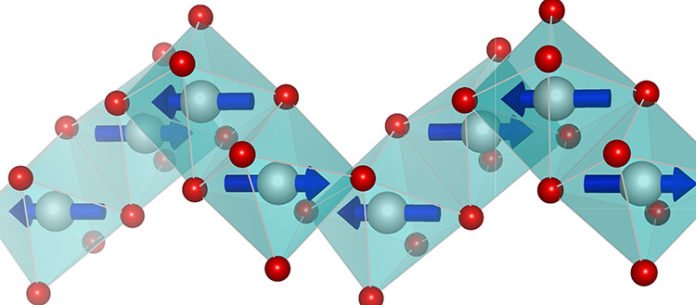Researchers from the University of Geneva (UNIGE), the CEA, CNRS, and UGA in collaboration with scientists from the neutronic centers ILL and PSI have been studying BACOVO – a one-dimensional quantum material unknown to the general public. They have discovered in this material a novel topological phase transition, governed not by a single type of topological excitation, but by two different ones. In addition, they were able to choose which of the two sets would dominate the other.
An arrangement of topological excitations in a quantum material is probably going to instigate a stage change. Various speculations have been produced about these topological excitations, including the achievability of joining two of them in a solitary material.
Scientists provided an estimate on this, suggesting the existence of two simultaneous sets of topological excitations and the competition between them. All in all, it is a small revolution in the mysterious world of quantum properties.
Béatrice Grenier, Sylvain Petit and Virginie Simonet, researchers at the CEA, CNRS, and UGA said, “We performed various experiments on BACOVO, an oxide characterized by its helical structure. But our experimental results evidenced a puzzling phase transition– which is why their team called on Thierry Giamarchi, a professor in the Department of Quantum Matter Physics in UNIGE’s Faculty of Science. Based on the results, we established theoretical frameworks capable of interpreting them. These theoretical models were then tested again using new experiments so they could be validated.”
Quentin Faure, Ph-D student at the Institute for Nanoscience and Cryogenics (CEA/UGA) and Néel Institute said, “The aim was to understand how BACOVO’s quantum properties act, especially their topological excitations. For this purpose, we used neutron scattering, meaning we sent a neutron beam onto the material. The neutrons behave like small magnets that interact with those of BACOVO, according to a strategy “disturb in order to reveal”, helping us to understand their properties.”
“And, in fact, the model we established with Shintaro Takayoshi predicted exactly the outcome seen in the experiment!”
Shintaro Takayoshi, a researcher in the Department of Quantum Matter Physics in UNIGE’s Faculty of Science said, “After settling on the “standard model” for BACOVO, we observed unexpected properties.”
When placed in a magnetic field, the second set of topological excitations was developed in competition with the first one, confirming theories from the 1970s and 1980s organized around the field opened up by the work of the Nobel scientists.
“As well as proving the existence of this confrontation between two sets of topological excitations within the same material – an unprecedented event – we were able to experimentally control which set would dominate the other”, adds the Genevan researcher. And that is a first!
Professor Giamarchi said, “These results open up a whole range of possibilities in terms of quantum physics research. It’s true that we are still at the fundamental level, but it’s through this kind of discovery that we are getting closer every day to applications for the quantum properties of materials… and why not quantum computers!?”
Their research is published in the journal Nature Physics.
